
Europe
14:35, 30-May-2019
The 0.3%: Meet the voters who will pick Britain's next PM
By John Goodrich
02:50
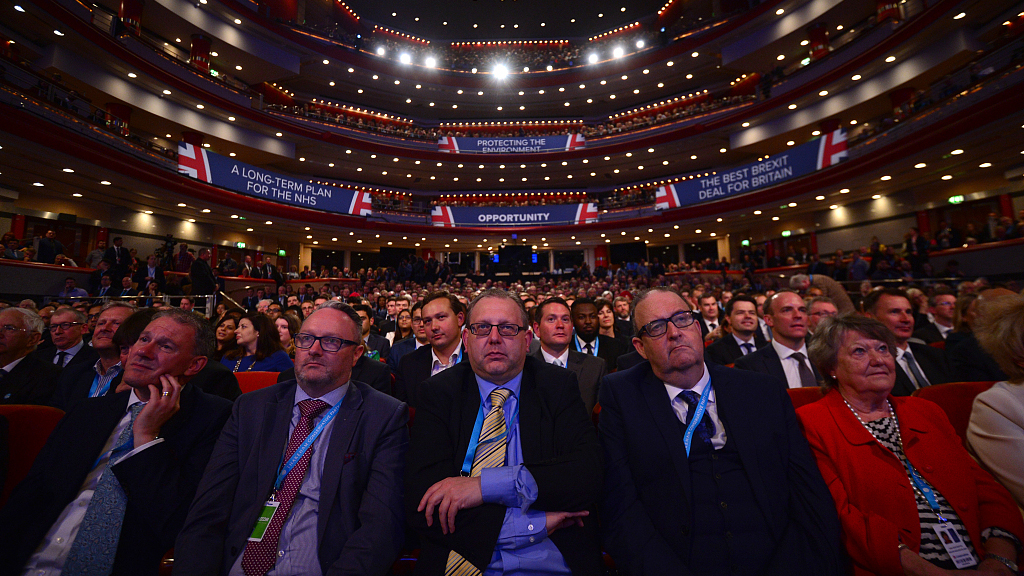
The battle to replace Theresa May as Britain's prime minister and Conservative Party leader, underway behind the scenes for months, has now burst into the open.
Contenders have jockeyed – sometimes subtly, sometimes not – since May lost the party's majority at the 2017 election, with one audience in the back of their minds: The estimated 150,000 people who pay 25 pounds each for the Conservative Party membership, and will choose Britain's next prime minister.
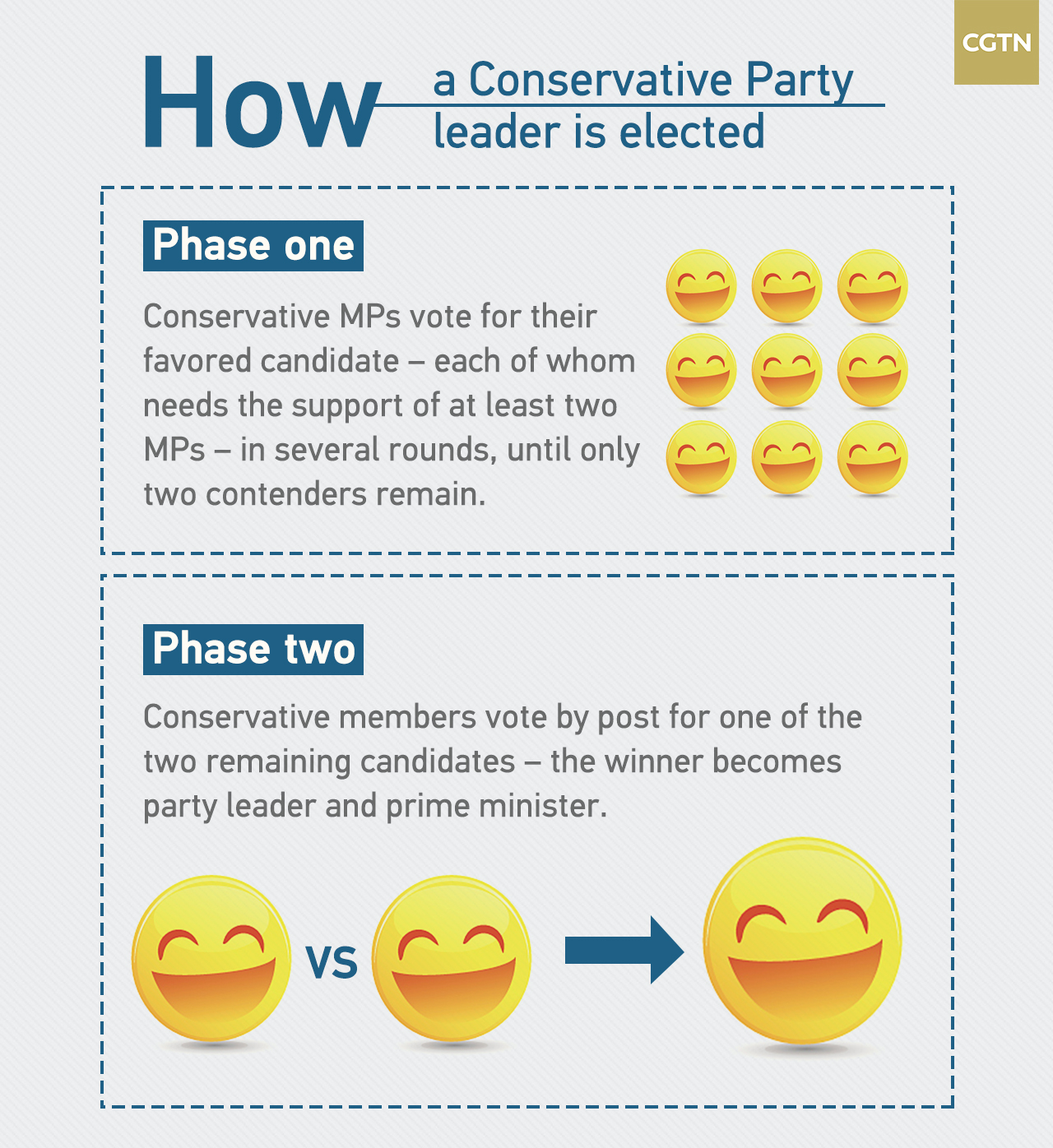
The election is a two-phase process. First, the candidates will be voted on by Conservative MPs, with one dropping out in each round until only two remain. The winner will then be decided by Conservative members, and become both party leader and prime minister.
The contenders – 11 so far confirmed, with others waiting in the wings – are acutely aware of the small electorate's views and may take some starkly different policy positions to the current governemnt.
Boris Johnson, once a liberal, pro-immigration mayor of London, has steadily transformed into Brexit hardliner. Michael Gove, who split from close friend David Cameron over the Brexit referendum and betrayed Johnson in the 2016 leadership contest, has spent a year rebuilding his reputation through dogged loyalty to May.
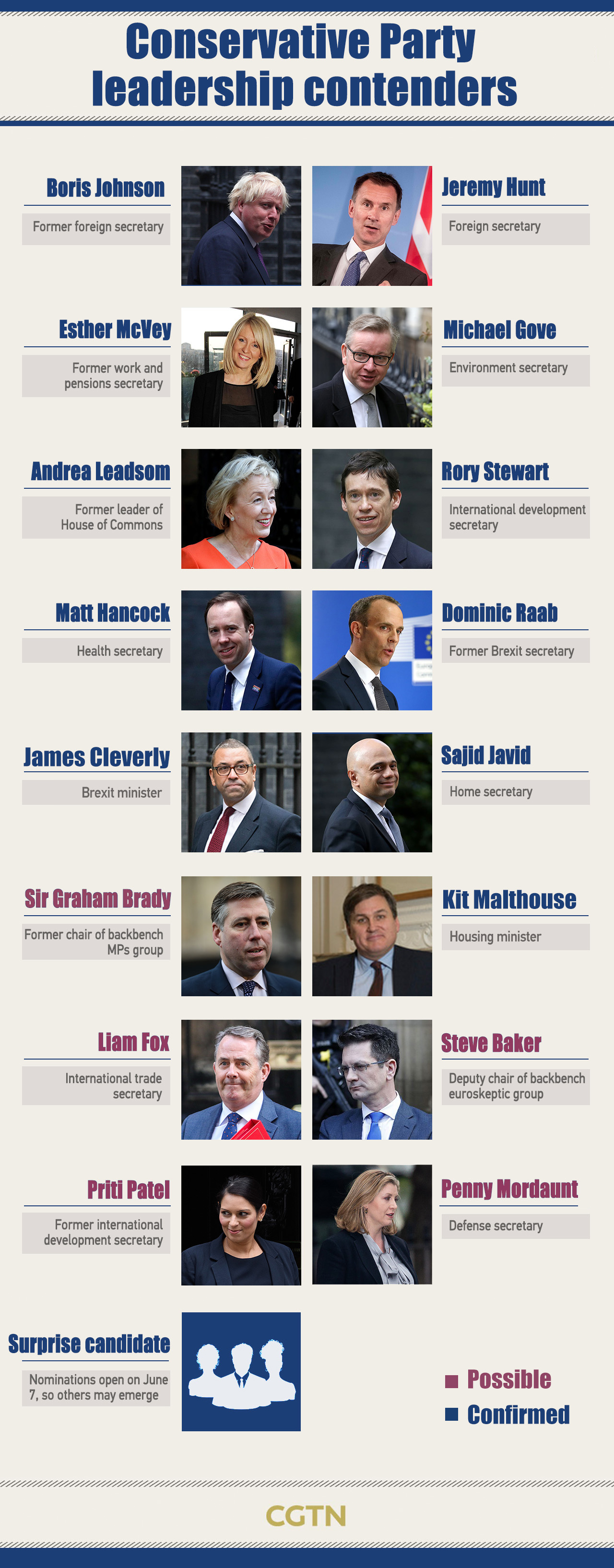
Andrea Leadsom, who exited the leadership race in 2016 after suggesting she would be a better prime minister than May because she had children, made clear her hardline Brexit credentials before finally quitting the Cabinet and precipitating the prime minister's departure.
Foreign Secretary Jeremy Hunt, along with Home Secretary Sajid Javid, renounced previous support for remaining in the EU and became strong proponents of Brexit.
Gavin Williamson's leadership hopes ended when May dismissed him as defense secretary, but he had previously sought to woo Conservative members with talk of opening new military bases around the world. Now he is working to ensure Johnson, who has a mixed reputation with MPs, is one of the final two candidates put to the membership.
Profile of a Conservative member
So who are the Conservative members? The party hasn't released detailed information since March 2018, when it said there were 124,000 members – weekend reports suggest that has swelled to at least 160,000, possibly boosted by pro-Brexit supporters wanting to take part in leadership and MP selection contests.
That makes the membership equivalent in size to approximately 0.3 percent of the 46.8 million registered voters at the 2017 general election.
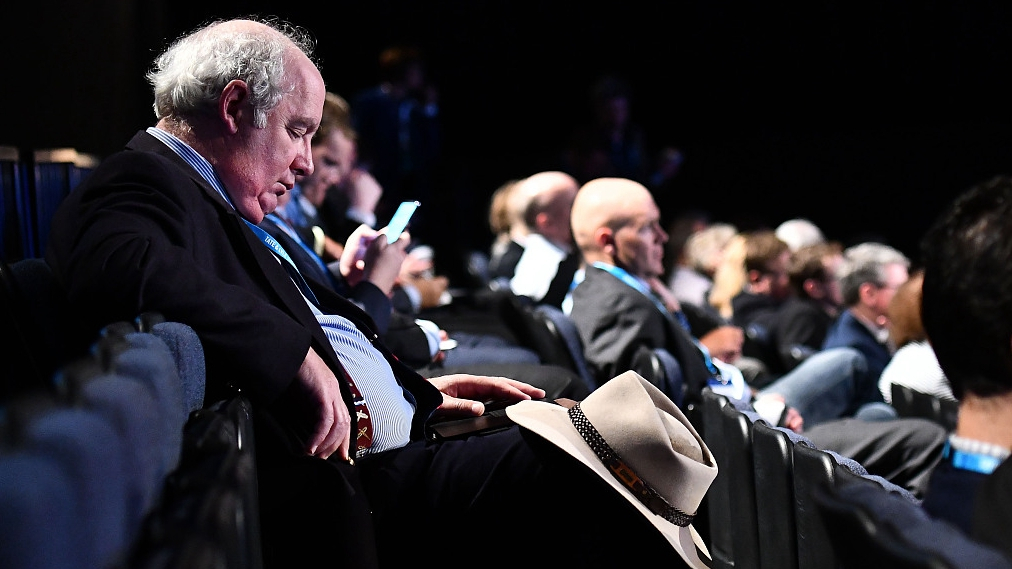
A delegate takes a nap in the back row on the first day of the Conservative Party annual conference in Manchester, October 1, 2017. /VCG Photo
A delegate takes a nap in the back row on the first day of the Conservative Party annual conference in Manchester, October 1, 2017. /VCG Photo
The Economic and Social Research Council Party Members Project, released in 2018, is the most comprehensive guide to the demographics of the membership. The research found the party's members were 71 percent male, 97 percent white, 86 percent middle-class, and had an average age of 57, with 44 percent aged over 65.
Their views are markedly different from backers of other major political parties in Britain.
Just 15 percent believe in wealth redistribution (against 94 percent for Labour and 77 percent for the Liberal Democrats), 77 percent believe youngsters don't respect traditional values (Lab: 20, Lib Dem: 18), and 71 percent want tougher prison sentences (Lab: 21, Lib Dem: 19).
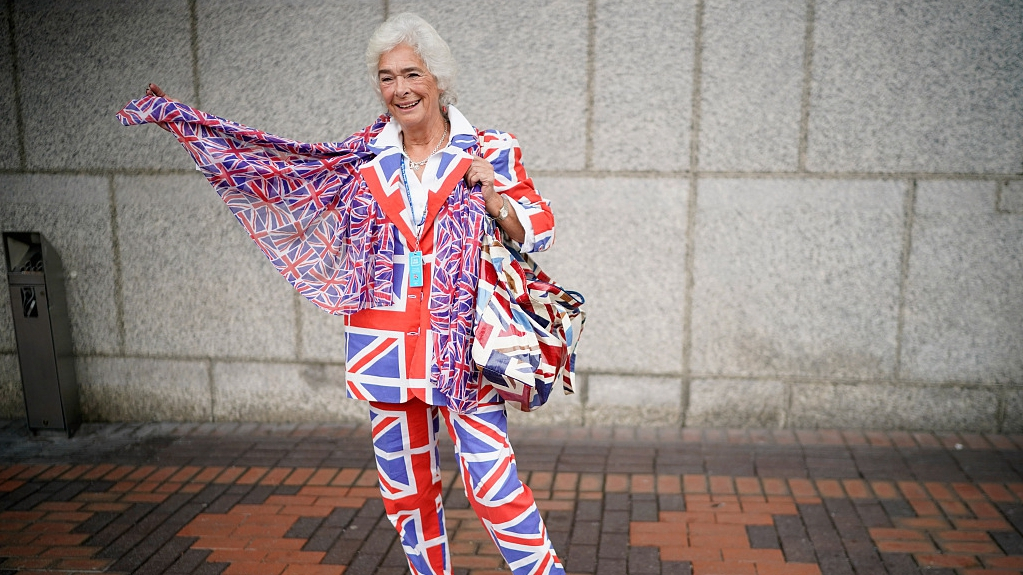
A delegate poses on the final day of the Conservative Party conference in Birmingham, UK, October 3, 2018. /VCG Photo
A delegate poses on the final day of the Conservative Party conference in Birmingham, UK, October 3, 2018. /VCG Photo
Eleven percent believe the austerity program implemented after the financial crash went too far (Lab: 98, Lib Dem: 75), and members marginally accept that immigration benefits the economy but think it has also undermined Britain's cultural life.
What do members want from a leader?
The overwhelmingly white, male, older membership's strident views are reflected in what they want from the Conservative Party's next leader.
A mid-May YouGov poll revealed the positions the eventual winner will likely have to pursue – with Brexit the dominant issue.
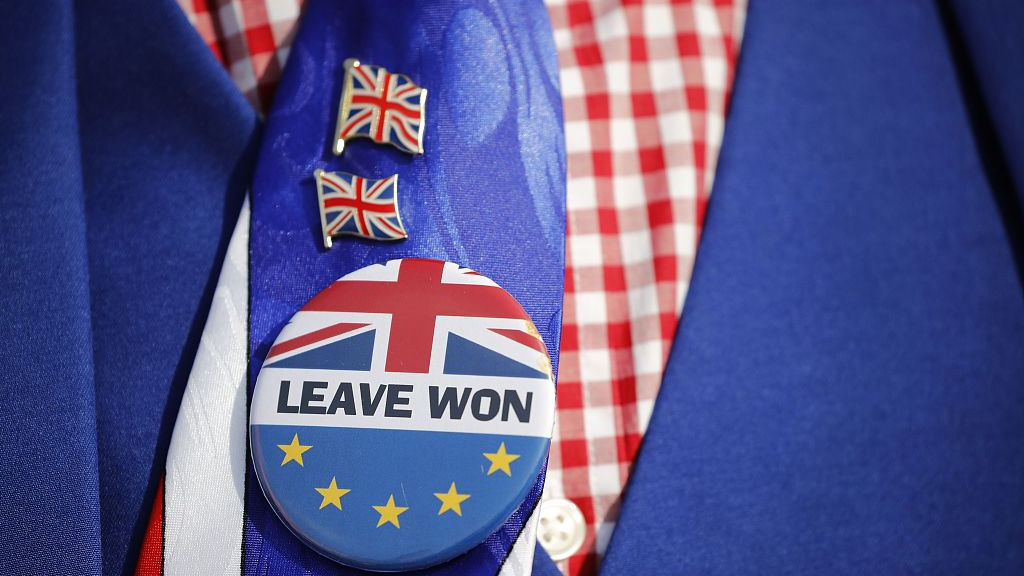
A pro-Brexit activist demonstrates in Westminster, London, March 28, 2019. /VCG Photo
A pro-Brexit activist demonstrates in Westminster, London, March 28, 2019. /VCG Photo
Pro-Brexit: 76 percent of Conservative members believe Britain was right to vote to leave the EU.
Pro no-deal: 66 percent indicated a preference for leaving the EU without a deal, 13 percent wanted a new deal, 12 percent supported renegotiation, and six percent favored a cross-party deal.
No second referendum: 80 percent would oppose a fresh vote, even if it included the option of a no-deal Brexit.
No early election: 17 percent favored a new leader holding an early general election, against 74 percent who wanted to wait until the next scheduled poll in 2022.
Economic focus: 47 percent of the members wanted any new leader to prioritize the economy, ahead of law and order on 42 percent.
Cut aid, end HS2: A huge majority wanted the target of spending 0.7 percent of GDP on international aid to be scrapped, and a strong majority called for HS2, a big budget rail project, to be abandoned.
Which candidates fit the profile?
The polling clearly suggests Conservative members want a pro-Brexit, no-deal prime minister who won't countenance a second referendum or a general election. Add in the desire for a winner – particularly with the party under pressure from Nigel Farage's Brexit Party, which topped the polls in the European Parliament election – and likeability.
Boris Johnson is the first choice of 39 percent of members to be Britain's next prime minister, according to YouGov, with Dominic Raab trailing well behind in second on 13 percent. Both have called for a tougher stance in negotiations with the EU, and both have suggested Britain must leave the EU on October 31 with or without a deal.
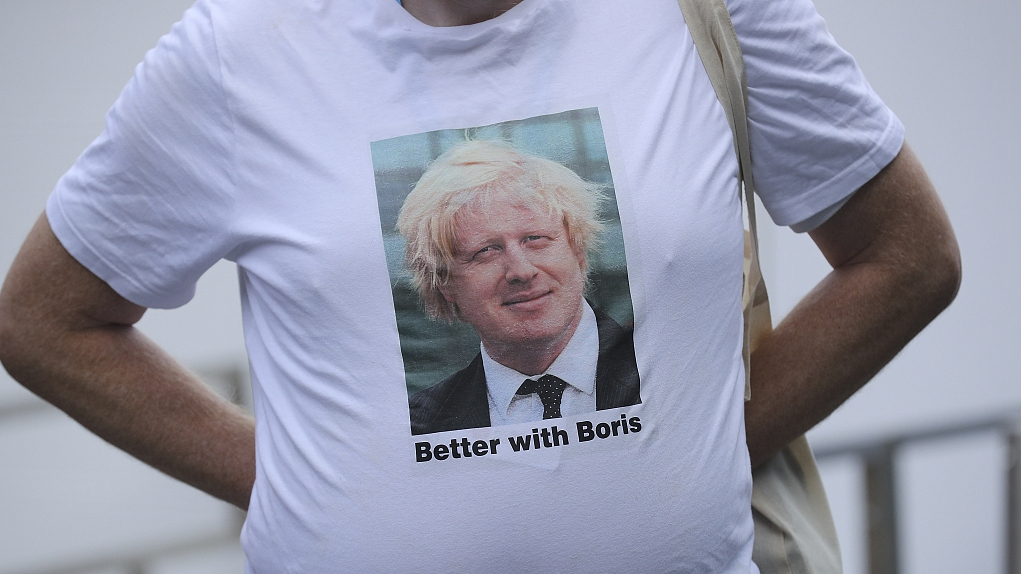
A delegate backs Boris Johnson at the Conservative Party conference in Manchester, October 3, 2017. /VCG Photo
A delegate backs Boris Johnson at the Conservative Party conference in Manchester, October 3, 2017. /VCG Photo
The picture could shift as the contest, likely to drag out over six weeks after May stands down as party leader on June 7, intensifies, other candidates get more exposure, and practical arguments develop in the wake of the party's fifth-place finish in the recent European Parliament elections.
Conservatives want a no-deal Brexit, but Parliament has repeatedly rejected it and YouGov polling suggests only 30 percent of voters across the country are in favor. And while Johnson is a clear favorite with the party, only 28 percent of national voters think he would be a good prime minister and many of his colleagues in Parliament are working to stop him getting on the final ballot.
As the contest begins, Johnson is best positioned among Conservative members – but much could change before the winner is announced in late July.
(Video by Wang Kailin)

SITEMAP
Copyright © 2018 CGTN. Beijing ICP prepared NO.16065310-3
Copyright © 2018 CGTN. Beijing ICP prepared NO.16065310-3